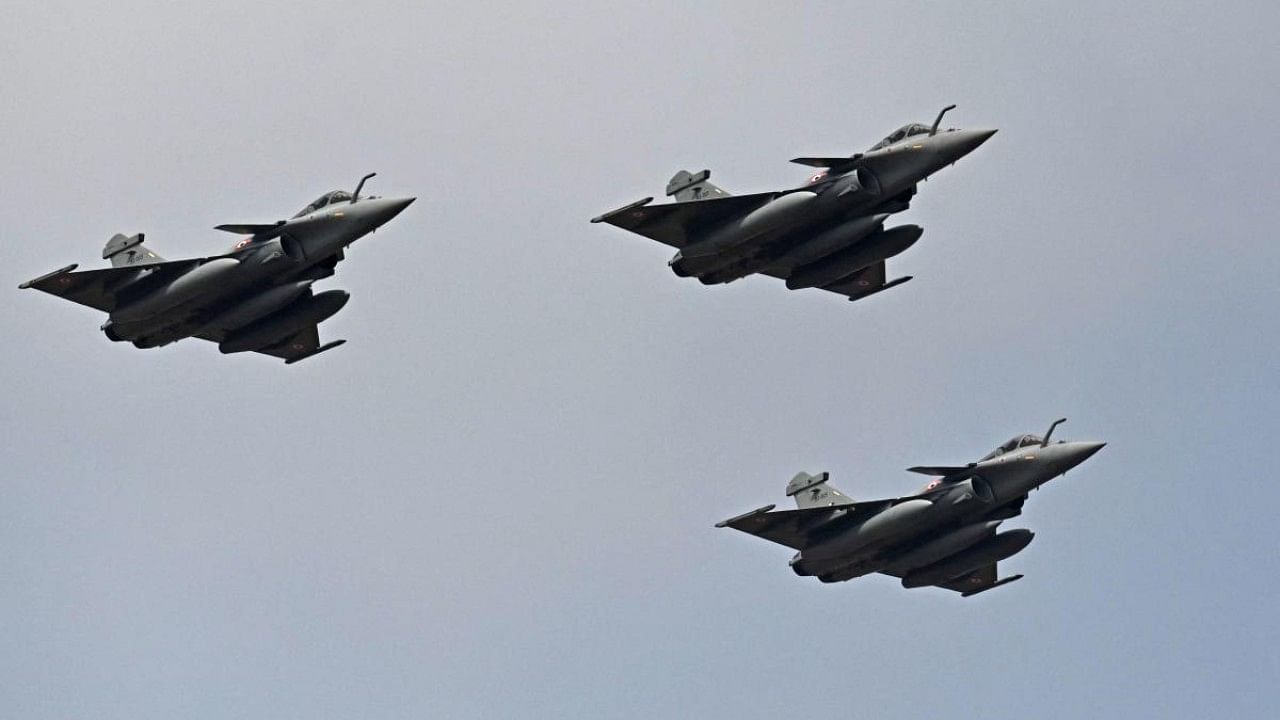
The ongoing Aero India 2023 in Bengaluru is apparently one of the most remarkable editions of the international air show India has ever hosted.
Organised every two years by the Ministry of Defence (MoD), the aviation exhibition this time round has attracted participation from 80 countries, with more than 800 aerospace and defence firms (including some 700 Indian companies, micro, small and medium enterprises or MSMEs, and startups) showcasing their products and technologies. These include Airbus, Boeing, Dassault Aviation, Lockheed Martin, Israel Aerospace Industry, BrahMos Aerospace, Army Aviation, HC Robotics, SAAB, Safran, Rolls Royce, Larsen & Toubro, Hindustan Aeronautics Limited (HAL), and Bharat Electronics Limited (BEL).
On display at the air show is the remarkable progress in India’s aerospace sector — from indigenously-developed unarmed aerial vehicles (UAVs) to the Light Combat Aircraft (LCA), Tejas — attesting to New Delhi’s ‘Make in India, Make for the World’ mantra. Inaugurating the event, Prime Minister Narendra Modi described Aero India as “a wonderful platform to showcase the unlimited potential our country has in the defence and aerospace sectors”, adding that India is today “not just a market for defence companies, but it is also a potential defence partner”.
Several Indian companies at the event are using the opportunity to sign partnership deals with foreign entities for co-development and co-production of aerospace equipment. Besides attracting much-needed foreign investment in India’s defence aerospace domain, this will also facilitate the integration of local MSMEs and startups in the international supply chain.
That said, while it is all very well to speak of ‘Atmanirbharta’ in India’s military aerospace domain, this can never be achieved without India first developing indigenous aircraft propulsion technology. India’s military production ecosystem can no longer be just about making and shipping spares for aerospace and defence corporations worldwide. The real deal is to actually build and export major military equipment, be it fighter jets, transport aircraft or helicopters.
This is, of course, easier said than done, as shown by the ridiculously long periods of time taken by weapon systems to leave the drawing board of the Defence Research and Development Organisation (DRDO). Take for instance, the LCA Tejas which is powered by the US-made General Electric (GE) F404 engine. The DRDO was originally tasked with developing the Kaveri engine for Tejas some 35 years ago. But after repeated failures, the DRDO gave up on the project and, last heard, the Kaveri power-plant has been re-engineered for use on UAVs instead.
It is a shame that successive governments turned a Nelson’s Eye on the development of aero engines for combat aircraft in India causing enormous economic loss to the exchequer over the years as engines cost a third of any new aircraft. Going by India’s acquisition plans for military planes till 2040, this translates into a whopping Rs 400,000 crore India will have to spend on buying aero engines from foreign vendors.
Only a handful of countries like the United States, Russia, the United Kingdom, and France have mastered the high-end technologies for building advanced combat aero engines. With this know-how zealously guarded, transfer of technology (ToT) remains a pipedream for India. Therefore, it is good to see New Delhi acknowledging this by planning joint ventures (JVs) with foreign companies to develop an engine for India’s fifth-generation fighter jet, the twin-engine stealth Advanced Medium Combat Aircraft (AMCA). Currently, the MoD is looking at three overseas aero engine makers for this partnership: GE of the US, Britain’s Rolls Royce, and the French Safran.
While the US wants to produce GE engines locally in India, Safran is keen on consolidating its presence here (being a major contributor to the 36 Rafales that India bought from France in 2016). The French have reportedly promised a ToT to sweeten the deal.
However, Rolls Royce’s offer of a JV with the DRDO seems to have an edge over the others as it apparently includes Intellectual Property rights (IPR) transfer, too, along with the ToT. This is important since the ToT alone does not always guarantee rights of export to a JV partner.
Thus, India cannot export JV-based equipment to another country if that country is considered a hostile state by India’s JV partner. But IPR transfer comes without any such strings attached. In other words, India runs the risk of a JV based on the ToT alone torpedoing its defence export target of $5 billion by 2025.
Whoever eventually wins the JV on the aero engine project, one thing is clear: the urgency with which New Delhi treats this will decide how soon India can realise its potential of exporting indigenous defence and aerospace products.
(Prakash Chandra is former editor of the Indian Defence Review. He writes on aerospace and strategic affairs.)
(The views expressed are the author's own. They do not necessarily reflect the views of DH.)